Have you ever seen a Baseball field from the top view so you can see every angle? You know that the area looks like a diamond if you do so. And do you know how many Baseball players are on the field during a game?
There will be two types of players on the field. The first is Offense, and the second is Defense. The fielders will play defense, and the batter will play offense.
When I create my Baseball Team each year, the fielding changes never occur because it is predetermined from the start. However, the roster size changes every year in the Major League Baseball rules. As a result, my team supervisor finds it challenging to manage a new group of players each time.
Okay, let’s dive into the topic.
Baseball Positions
The fielding concept has remained unchanged since 1845. According to Major League Baseball rules, there are nine players on the field to cover the ground. There will be six players in the infield (2 core players and four infielders). Then there will be three players in the outfield.
Catcher
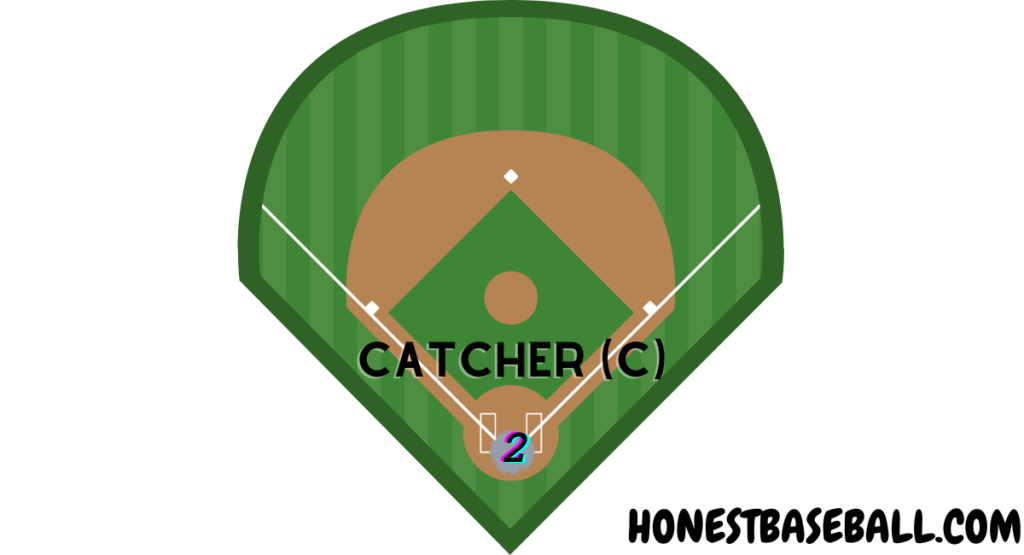
A catcher stands behind home plate. His main job is crouching behind the plate and receiving pitches from the pitcher. He also sends cues to other players. Additionally, he suggests the pitching style and throwing location.
If a runner attempts to steal home plate, he will be the last line of defense.
He must be quick and have strong arms. Every catcher must have good communication skills as they are the leader in the field. This position is also known as the most difficult to handle than other Baseball positions.
Do you want to be a pro catcher, then this article might help you || How to be a Pro Catcher
Pitcher (Hurlers)
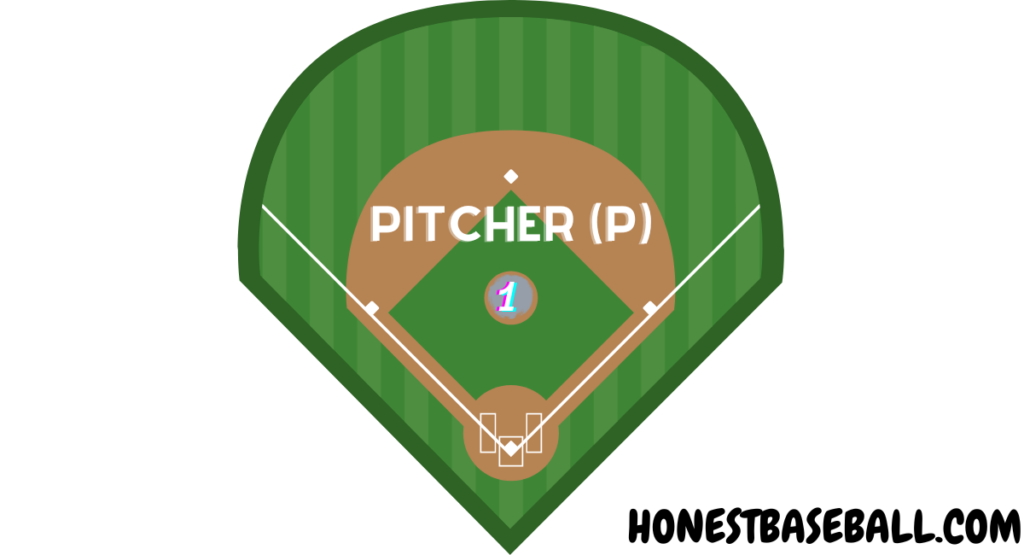
A pitcher is one of the core players in a Baseball game who throws the ball, targeting the Hitter with his best pitches to make a strikeout. The pitcher stands on the pitching mound and then the pitcher throws the ball the way the Hitter can not hit it.
There are usually two types of pitcher, Starter, and Relief. The Starter usually starts the game and pitches for six or seven innings. On the other hand, a relief pitcher replaces a starter pitcher and plays out the rest of the game.
To increase your Pitching Velocity, read this tips|| How to increase Pitching Velocity
First Baseman
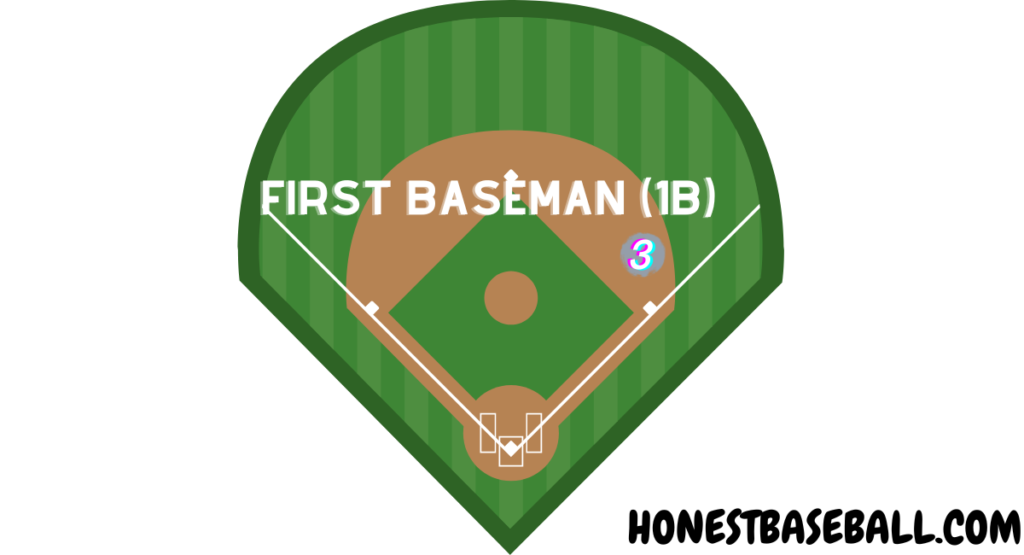
This player stands by the first baseline in the infield. He usually receives most throws and tries to tag runners to prevent them from advancing. This base is one of the most active and busiest zones. As most hitters are right-handed and they swing perfectly to left field.
A first baseman needs to have strong throwing arms. Being flexible and agile is also necessary for being ideal for this position.
Second Baseman
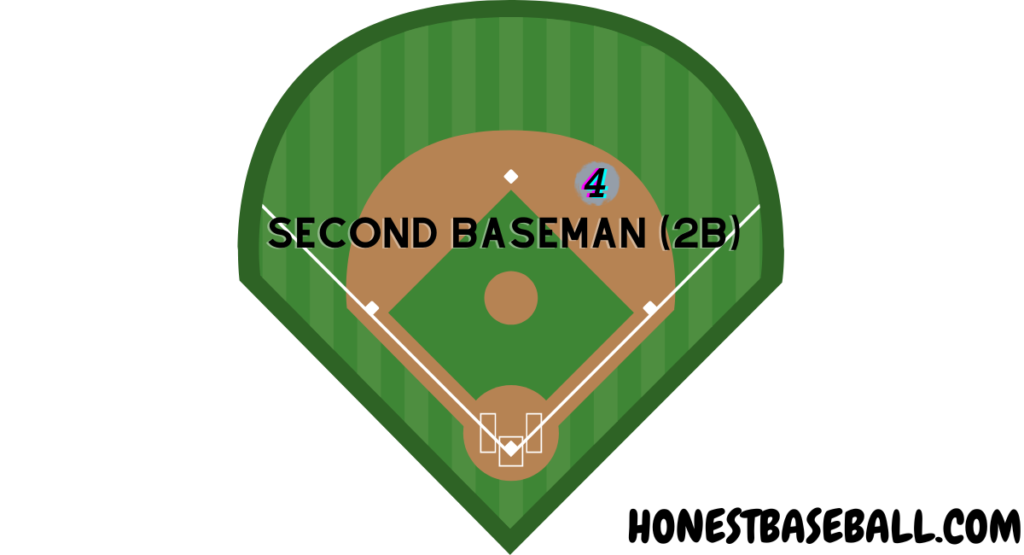
Second Baseman is very crucial for a double play. He stands between the first and second base and is in charge of the second base.
Second Basemen must be agile and strong. Most coaches and team managers choose a right-handed player to cover this position; they can play easily.
Third Baseman
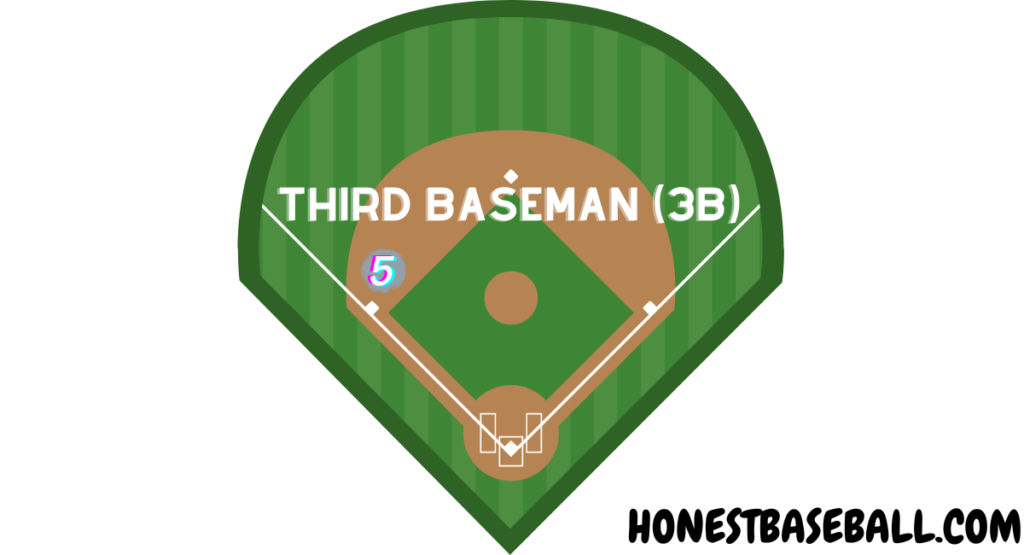
Third Baseman is another infield player standing near the third base and foul line. They need to be strong and agile as they must cover the ground quickly.
The third Baseman is responsible for covering the third base and receiving every ground ball. During a double play, he might need to make a long throw. They are the final hope to tag base runners out who goes for a home run or stealing.
Shortstop

This player stands between the second and third base. They have the most ground to cover to prevent the balls from going outfield. This position is also the busiest to cover as most batters are right-handed players.
A shortstop player needs to be fast and flexible. They may need to throw a ball from near the third base to the first base, so having solid arms are also needed. They are one of the important assets to start double plays.
Left Fielder
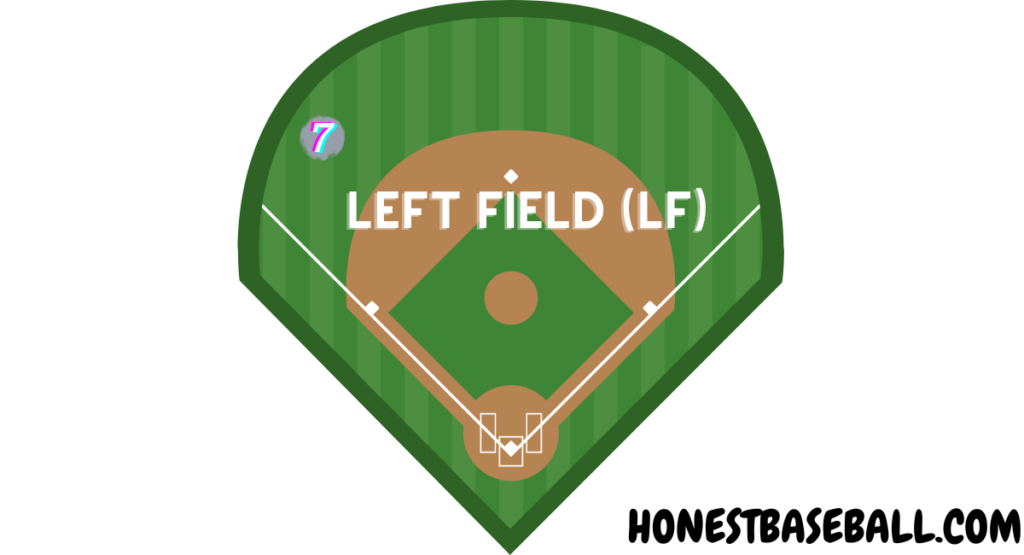
This player stands on the left side of the outfield and covers the left part of the outfield. His job is to catch balls, prevent them from going out of the boundary, and send them back quickly.
Sometimes, left-fielders need to throw the ball to the home plate to get a runner out. So strong arms are the top requirement to fulfill this position. They are moreover the assistant of the center fielder.
Center Fielder
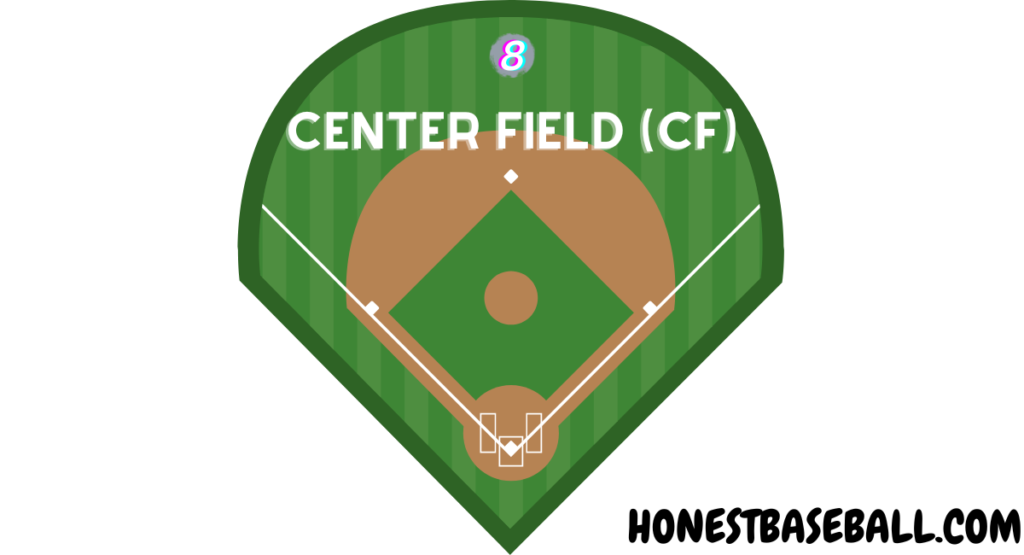
This position is one of the most needed positions in the outfield. A player stands in the center of the outfield (Known as Center Field) whose main job is to assist both left and right fielders.
Center Fielders cover most of the ground of the outfield and have the priority to receive every ball if more than two players go after one ball.
The center fielders need to be stronger than any other player and be very active and the fastest.
Right Fielder
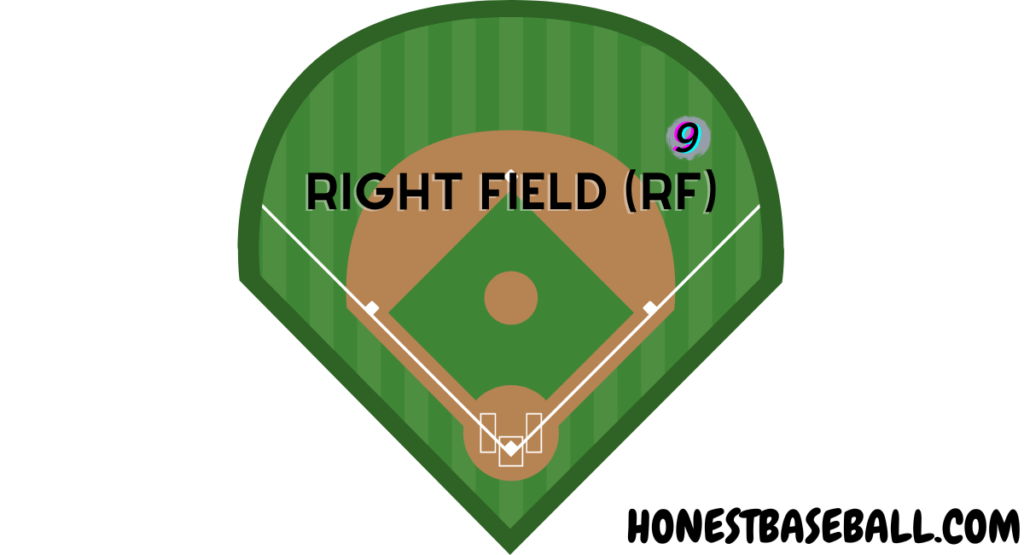
This positioned player stands on the right side of the outfield. He is the backup of the First Baseman. And mostly in charge of catching fly balls that go to his area. They can be a good helping hand to the center fielder.
This position is considered the least active zone, and a team can hide their weakest player here. But a right fielder needs to have strong arm1s and good reflexes as he may need to throw the ball a long distance.
Designated Hitter
In the American League (Not in the National League or Major League Baseball Team), there are some players whose only purpose is to play as a Hitter. They do not field against the opposing team. Their only skill is playing the game as a hitter, known as "The DH."
So for a team, to make a better score, a designated hitter’s all skills work for a perfect hitting.
For being a better hitter read this article to know the essential tips|| How to Become a Better Hitter
Different Roster Sizes
See, there can be three parts to a team’s players. One is how many players they got under contract for a season. Then how many players will be on the roster, and how many will be on the field?
Since 1876 or so, the fielders’ number has been the same. But from time to time, the roster and contract size changed. There can be 25 players on the roster in a recent season on one team. Furthermore, one team can have 40 players under the contract to play for one season.
Major League Baseball Roster Size
Major League Baseball Roster (MLB roster) has 26 active players. But every team can bring a maximum of 40 players under Major League contract for every season. The other 14 players stay as a backup in case of any injury or inconvenience in performance. However, the roster size got minor changes in the last two seasons.
To become an active player, a player comes in a contract of five or four years ( based on the player’s age). However, an MLB team manager can send extra players to other teams in the offseason.
Minor League Baseball Team Roster Size
Every Minor League Baseball Team has a classification level, and these levels have individual permits of roster size.
According to the 2021 season in Minor Leagues roster,
A Triple, A-level team has a limitation of 28 players on the roster.
On the other hand, a Double-A can have 28 players.
A High A-level team can have a maximum of 30 players.
Furthermore, a Single-A can also have 30 players max in their roster.
However, a US-based Rookie Level team does not have any limits.
But the International Rookie can have 35 players maximum on the roster.
College Baseball Team Roster Size
In a College Baseball league, there are mainly five levels. Division 1 (D1), Division 2 (D2), Division 3 (D3), National Association of Intercollegiate Athletics (NAIA), and National Junior College Athletic Association (NJCAA). This is the one step away from playing in a professional Baseball team.
D1 level is known as the highest level of College Baseball. And this level is limited to having 35 Players on the roster.
According to the Baseball Rule Book, the D2 level can carry 39 players on the roster.
On the other hand, a D3-level team can have 34 players on its roster.
Furthermore, the NAIA can have 38 players.
Finally, an NJCAA level team is allowed to have 30 players max.
Youth Baseball Team Roster Size
The Youth League Baseball team is mainly created with 4 to 16 years old children. And has six levels. These are Tee-Ball, Minor League, Major Division, Intermediate, Junior League, and Senior League.
There are no pre-setted rules in a high school baseball team, but it generally carries 14 to 20 players.
On the other hand, the Youth Baseball teams have 11 or 15 players to expand their roster.
Major Division is an exception with no maximum player number but usually carries 12 to 15 players.
If you are a new Baseball player or fan, then the following article will be very helpful || How to play Baseball
Frequently Asked Questions
1) How many baseball players are on the outfield?
ANSWER: There will be three players on the outfield: the right fielder, the Central fielder, and the Left fielder.
2) What are the 9 positions in Baseball?
Answer: The nine players’ positions in Baseball are the following- Catcher, Pitcher, First Baseman, Second Baseman, Short Stop, and Third Baseman. And other outfield positions are Right Fielder, Central Fielder, and Left Fielder.
3) Which can be the most challenging position to play?
Answer: The catcher can be the most challenging position to play among all the players. As it requires long crouching.
To know more about the hardest position, follow this link || Hardest Position in Baseball
4) What is a Designated Hitter?
Answer: There are some players in BaseballBaseball whose sole role is to hit. Designated hitters are not fielders but rather are assigned to hit. They are only found in the American League.
5) How many baseball players are on a field at once?
Answer: There can be 9 fielders, 1 hitter, and 2 base runners on the field at once.
Conclusion
At the beginning of Baseball, the positions stayed the same except for some additional parts in the Offense. And from skill and modern strategies, every position’s efficiency increases from time to time.
Major league baseball teams play 162 games each season. Each team has 25 active players, each of whom can play at least one position.
There are nine defensive positions on the field. The number of players on a team could change throughout the season as injuries occur or trades happen between teams, but there will be 25 total players on each side of the field ready to play for most games.
I hope you got a brief idea about how many baseball players are on the field from this article.

Hello everyone. My name is Jason Butler, and I live in California, America. I was a professional AAA Minor League Baseball player. I lost my chance of playing MLB for injury issues, but I did not lose my love for baseball. I attended the coaching training program and am now working as a coach in a small school in San Diego.
I always love to share my experience and knowledge if that can help you. Play baseball, and stay fit.
